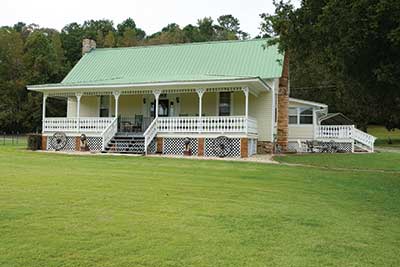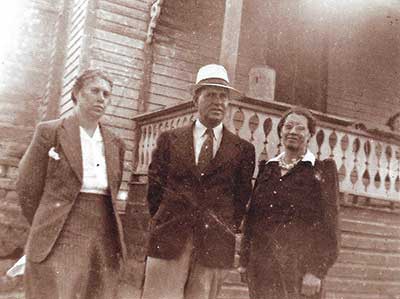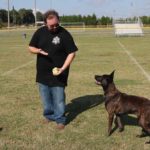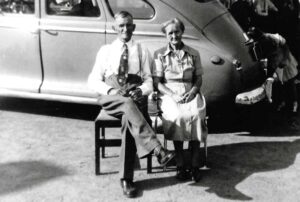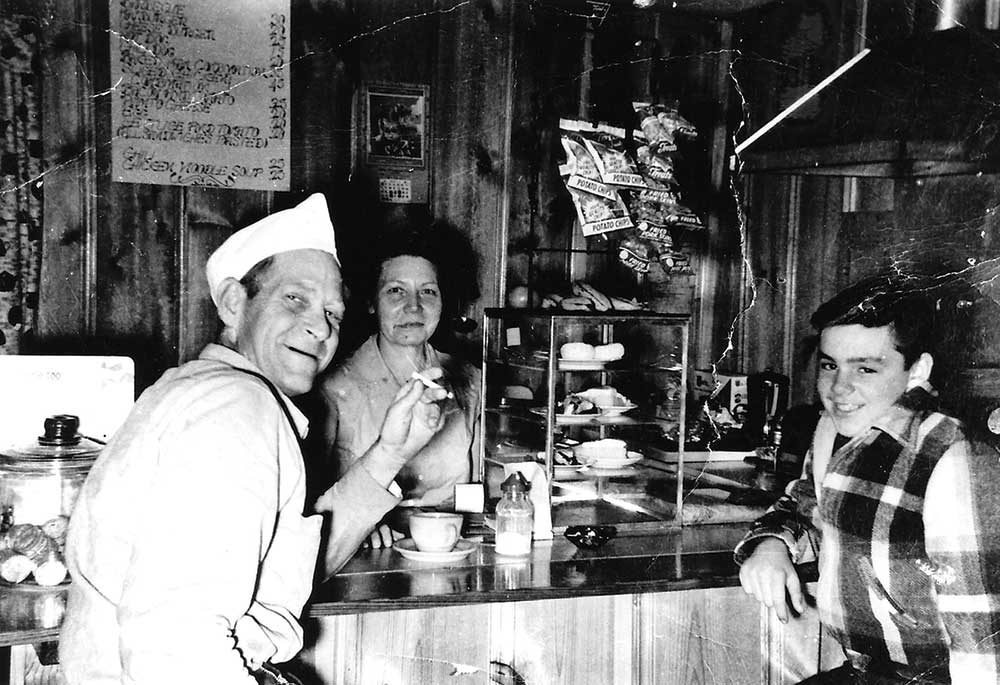
Story by Joe Whitten
Photos by Wallace Bromberg Jr.
Submitted Photos
Many late-Victorian-style cottages remain in St. Clair County, and one of the loveliest is the c1891 home of 80-year-old Maurice Huneycutt, who has cherished and restored this ancestral home.
“My great-grandfather, William Henry McConnell, built the house. He was married to Salome Ash,” a descendant of the John Ash family and for whom Ashville was named. After William Henry died in 1930 and Salome in 1932, “grandmother and granddaddy bought out the other heirs for this place – house and about 38 acres.”
Maurice’s grandmother, Velma McConnell, grew up in this house. She married Arthur Huneycutt, who lived a short distance from them on today’s U.S. 174. They lived in Birmingham for a while, then on Blount Mountain. When the Great Depression swept the country, they moved to the homeplace around 1931 or ‘32.
Maurice was born in 1941 in this house. “Some of my first memories,” recalls Maurice, “was playing under the house using a tablespoon and a toy truck to build roads. There was no underpinning, so it was light under there.”
In the 1940s and ‘50s, families had gardens and raised beef and pork for food. “We had a garden and cows and pigs and beehives,” Maurice reminisced. “We had turkeys and chickens for eggs and meat. We had a salt box to store the pork in and a smokehouse to smoke bacon and hams. The fat was rendered into lard – nobody used Crisco or cooking oil in those days. My grandmother milked the cow every morning, and we had fresh milk, cream and butter all the time.”
Water for the family came from the front yard well still kept under a roofed shelter today. “The well water was cool and tasted wonderful. Our well was freestone, and the water was the best around. On Sunday, the church people would come here and draw a bucket.”
Pat and Maurice’s parents were Annis Redwine and Maurice “Boots” Huneycutt, Sr. The nickname “Boots” came from his love of wearing boots, and everyone in Beaver Valley knew him as Boots. He was a butcher working in Birmingham when he met Annis. “The Redwines were from Hampton, Ga., and had come to Birmingham. She worked at Pizitz’s candy counter, and that’s probably where she met Daddy,” Maurice recounted.
Boots and Annis married in 1932, and had two children, Patricia, born in 1934, and Maurice Edwin, Jr., born in 1941. For a while, the family lived near Atlanta where Boots had a job. “We were way out in the country,” Pat laughed, “and it was lonesome. They said I would sit and carry my coat. I wanted to go back, so finally my granddaddy, Arthur, came and got me. We came back to Odenville.
Boots worked hard, and in the early years of married life, he raised vegetables to sell to supplement his regular job. “I heard my mother tell about one year my father plowing two oxen,” Maurice chuckled. “They said people laughed at him about the oxen, (but) he made a good crop.” Boots took the vegetables in his buggy to the Margaret coal mines “and sold them to the miners for clacker,” Maurice said. “Clacker” was the term used for coins the mines paid the workers with. You could take the clacker to the company store and get food, shoes or whatever you needed.” With the clacker, Boots traded at the company store.
Arthur Huneycutt, Boots’ father-in-law, worked as a foreman at the Pullman Plant in Birmingham. He helped Boots and a number of Odenville men get jobs at Pullman. These men, Maurice said, “would ride Mize Bus Line on Sunday night and come back home on Friday night. Glen Stevenson drove the bus. It was white with blue stripes.” The men boarded in the city during the week, and on Friday night, some of the men had nipped the bottle before they bid Glen Stevenson goodnight.
And liquor almost killed Boots and changed the Huneycutt story. For all of Boots’ hard work providing for the family, when the craving took hold, it took over. It happened the evening of Christmas Day in the mid-1950s.
Boots and family had spent the day with daughter Pat and her husband, Henry Coshatt. Back home in Odenville, one of Boots’ drinking friends came by. “When they got together,” Maurice reflected, “they would get very drunk, and it would be bad for a day or two.” Annis and Maurice begged Boots not to go, but their pleas went unheeded. He left, and “the next day, no word from him, and the next day nothing. So, we started the ‘find Boots’ routine.” This included calling the jails, the drinking places and the hospitals.
It took three or four days, but they located him in an Anniston hospital. He and his friend had wrecked, and Maurice remembered that the ambulance driver said he thought Boots was dead, so he stopped for a soft drink. “Boots went through the windshield. Broke his leg above the knee and cut his throat, leaving a scar of about 6 or 7 inches and 1-inch wide.”
Annis had Boots transferred to the VA hospital in Birmingham. A month later, he came home in a body cast, and lay in bed flat on his back for eight months. His leg never healed properly, and he limped when he walked again. In his early 40s, Boots never worked again.
From this tragedy, there came to be a café called Huneycutt’s Country Kitchen. Annis Huneycutt was a woman of indominable spirit – the “unsinkable Huneycutt matriarch” of Odenville. From the tragedy, a family and a community combined forces to build a café still fondly remembered by older folk today – Huneycutt’s Country Kitchen.
“We had to make a living.” Maurice remembered, “and we had no money,” So, with three related superb cooks – Annis, her mother-in-law, Velma McConnell Huneycutt, and Velma’s sister, Claire McConnell Scoggins – why not a snack bar or even a café established in Odenville?
Ed Fulmer owned nine small lots along Beaver Creek where MAPCO is today at the corner of Alabama Street and U.S. 411. The Huneycutts bought them, but they required fill dirt to raise them above floodplain. Dwight Blocker, although crippled by arthritis, drove the dump truck and filled in the lots.
With the site ready, Maurice and his grandaddy tore down the homeplace barn to construct a building. “It had wide boards, and all that lumber was straight,” Maurice said. “We had three syrup buckets for different sized nails. The nails had a little bend, and you’d lay ’em down and hit ’em one time and they’d be straight. With a handsaw, a hammer, a hatchet, a level, a square, a plumb bob and chalk line, we built that snack bar out of old heart pine 12- to 15-inch-wide boards. My Uncle Bill Redwine wired it, and George Mize came by and gave us directions.”
They bought finishing material at Sears and put it on their ‘Easy Payment’ charge account. Mr. Granger from Sears helped them with selecting the materials.
“We put the gas in through a hole in the wall,” Maurice laughed, “and built a frame out of 2x4s to set a grill on. Then we took the stove and refrigerator out of our house down there and started cooking – hotdogs, hamburgers and stuff like that.
“Grandma would cook vegetables up at her house, and Aunt Claire would cook the pies. My job was to get in the car – I was about 15 and didn’t have a driver’s license – but I’d get the vegetables at Grandma’s and then go to Aunt Claire’s and get the pies.”
Things progressed, and community folk pitched in to help make the business a success. Ben Vandegrift gave them his barber shop, which the Huneycutts “tore down and put the nails in a bucket” and built onto the snack bar. “We put a sink and the stove in there.” Then, Mr. Hoover, who had a farm in Odenville, “gave us a house in Ensley. So, we went down there and tore it down. Charlie Mordiccai let us borrow his dump truck, and we’d load the lumber on it and bring it home.” With this material, Lester and Burt Cash extended the kitchen and built a wing onto the snack bar, and the Huneycutt Country Kitchen came to be.
“Back in those days,” Pat commented, “nobody had any money, and we didn’t know the difference.” Maurice added, “You did whatever you had to, and you did it yourself.”
Maurice continued reminiscing. “Granddaddy found the windows on the railroad. So, we put hinges on top of them, and we put an eye on the bottom and had a coat hanger hanging down that we hooked the window to. None of ’em ever fell and hit anybody! That was in the snack bar. In the new part, we used the windows out of the building we tore down in Ensley.”
The school recognized that Boots and Annis needed Maruice’s help during their lunch hours. They worked his schedule so he had study hall, lunch and PE, one right after the other, so Maurice could help during rush hour. After school, he worked until 9 p.m. “We’d clean after breakfast, after lunch and at night. On Monday night, we waxed the floors.” Oldtimers remember the café as being immaculate.
The new wing provided more seating for regulars, so, Boots and Annis hired other local good cooks, Missouri Patmon and Ozella Smith. Word began to spread, “There’s a good little café in Odenville.” So, when someone passed though Odenville and stopped to eat, on Sunday, he’d bring his family for lunch after church. Claire’s son, Henry Scoggins, was in Atlanta and someone asked where he lived. When he told them, Odenville, Alabama, the person responded, “Oh, they’ve got the best restaurant there!”
Sundays became very busy. “Most of our trade was from Birmingham and Leeds,” Maurice recalled. “We had so many come they couldn’t all get in, so we built a cover where they could wait in line. We could seat 30 at a time”
Of course, many Odenville citizens made Huneycutt’s their regular eating place. Maurice remembered Mable and William Forman, Garland and Sis Fortson, and Steve and Evelyn Mize dining there almost every day.
It was hard work. “When I went to work, I’d took a picture of the café and put it on the wall. No matter how bad it got, I’d look at the picture and say, ‘I’m better off now than I was then.’”
Boots became an iconic part of the café, and his memory brings a smile to those who remember him. One story involves a customer who had moved to Odenville “from up north,” who asked for “iced coffee.” Boots slammed a cup and saucer down, filled the cup with coffee, threw an ice cube in it and said, “There’s your iced coffee.” This customer is remembered as knowing how to “pull Boots’ chain.”
Pat recalled Boots’ encounter with the Alabama health inspector. “The health department would always come in at lunchtime – busiest time of the day. They came in one time, and it made Boots mad. He picked up a hammer and said, ‘You come in here at lunchtime! Don’t ever come in here at lunchtime again.’ They said, ‘Oh, no, no, we won’t come at lunchtime again.’’
Sales tax collection was another thorn in Boots’ side. “A long time ago,” Maurice laughed, “the sales tax man would come to your place to collect. He’d say you owe us so much, and that would be it. So, Daddy got a length of pipe and took a hatchet and clinched one end and nailed it next to the cash register. He said, ‘Every day when we close, figure out how much the sales tax is and put it in that pipe.’ So, every night we’d put in the quarters and dimes and nickels in that pipe. So, the next time he comes to collect the tax, he got out his calculator, but Daddy hops over and gets the pipe and empties it out. The money spilled all over the table, the floor and rolled against the walls. Daddy said, ‘There it is.’”
In spite of his impatience, Boots was also a man of kindness and compassion. “He always looked out for the underdog” Maurice commented. For instance, if the sheriff, transporting prisoners, stopped for lunch at the café, Boots would take hamburgers or hotdogs to the prisoners. He gave the food to them, but the sheriff had to pay. Boots and Annis also provided meals to folks who were shut-in or needy.
The most well-remembered act of kindness is their taking into their home Wayne Franklin. Maurice recalls the first time he met Wayne in the 1950s. “I heard this awful crying or screaming noise, so I went out to see what was happening. I see this kid, seven or eight years old, running down the road.”
Maurice couldn’t understand what the child tried to say, but knowing he was scared, he took him into the house. He calmed down and told him his name was Wayne and where he lived – quite a way from the Huneycutt home. When he’d got home from school, his grandmother wasn’t there, so he started out. The Huneycutts took him home and waited for his grandmother, Sal Betts, to arrive.
Later, Mrs. Betts and Wayne lived in a tar-paper cover building across the highway from the café, and that’s when the relationship with Wayne began. Wayne’s parents were dead, and Mrs. Betts was destitute. Boots and Annis both had tender hearts for the less fortunate folk. “Wayne started hanging around the café,” Maurice reminisced. “Boots always loved the underdog, and my mother just took Wayne under her wing. He stayed with us most of the time. Tom, the Coca-Cola man, would pay Wayne to stack empty bottles in the cases, and he bought Wayne a blue and white coat.”
Wayne was a happy boy with the Huneycutts. However, school was another matter. He had a speech impediment, and he couldn’t read, so the school placed him in the Special Education class. He was smart in other ways and could learn. He suffered from dyslexia before this was understood or help for these students was available in public schools.
Mrs. Betts died, and Wayne lived in the Huneycutt home. One day an aunt and her husband from Florida, who had somehow heard about Wayne, showed up in Odenville and packed him off to live with them. “I do not think,” Maurice observed, “that they understood his reading problems. But these people were real and took Wayne with them.”
They didn’t hear anything from Wayne for a long time, until one Sunday afternoon, Wayne was back. “We were glad to see him,” Maurice said. “The aunt said Wayne wanted to live with us, and Daddy said, ‘That’s just fine,’ and we moved him in. The aunt said that it hadn’t worked out as they had hoped it would.”
The Florida folk left, and then the Huneycutts learned what happened when it didn’t “work out.” Wayne had a grandfather living in the woods of Montana. The aunt wrote a tag with Wayne’s name and where he was going, pinned it to the blue and white coat that Coca-Cola Tom had given him, put him on a Greyhound Bus and sent him to Montana. At the Montana destination, nobody was there to meet him. A policeman took him home with him then got him to the grandfather.
A Montana newspaper wrote a story about his trip and mentioned he was hard to understand because of his Southern accent. Maurice recalled Wayne’s telling him his grandfather taught him to hunt and that they lived off the land. When his grandfather died, Montana sent him back to Florida and from Florida, he arrived back home with the Huneycutts in Odenville.
Boots and Annis sent him to Gadsden Trade School where he finished cabinet making and learned a trade. He married and had children. His first son he named Paul after his friend, Paul Loren in Odenville. He owned and operated The Shelby County Woodworks and made a good living for his family until his death in a car wreck.
Maurice said of Boots, “Daddy was always in trouble. He didn’t conform. But at his funeral, there were people standing in the parking lot because they couldn’t get in the church.”
Of Annis, Pat commented, “Her background was Hampton, Ga. They had a big country place there. She was more like a refined Southern lady.” Those who remember her would agree. In her speech, Annis retained the soft vowels of her Georgia years. She had a distinctive laugh that was joyful and contagious.
Reflecting on the difficult times, Pat said, “Mama just took everything in stride and kept working.” Maurice agreed, adding, “That’s what she did. She had a pretty bad time with some of the things that went on.” He paused in memory, then said, “She always worked hard.”
This quotation by Leonard da Vinci applies to Annis: “People reveal themselves completely only when they are thrown out of the customary conditions of their life.”
But it was perhaps a granddaughter who described her best: “(She) showed us all how to be strong and resilient,” for Annis had held a family together by the strength of her character and spirit.














